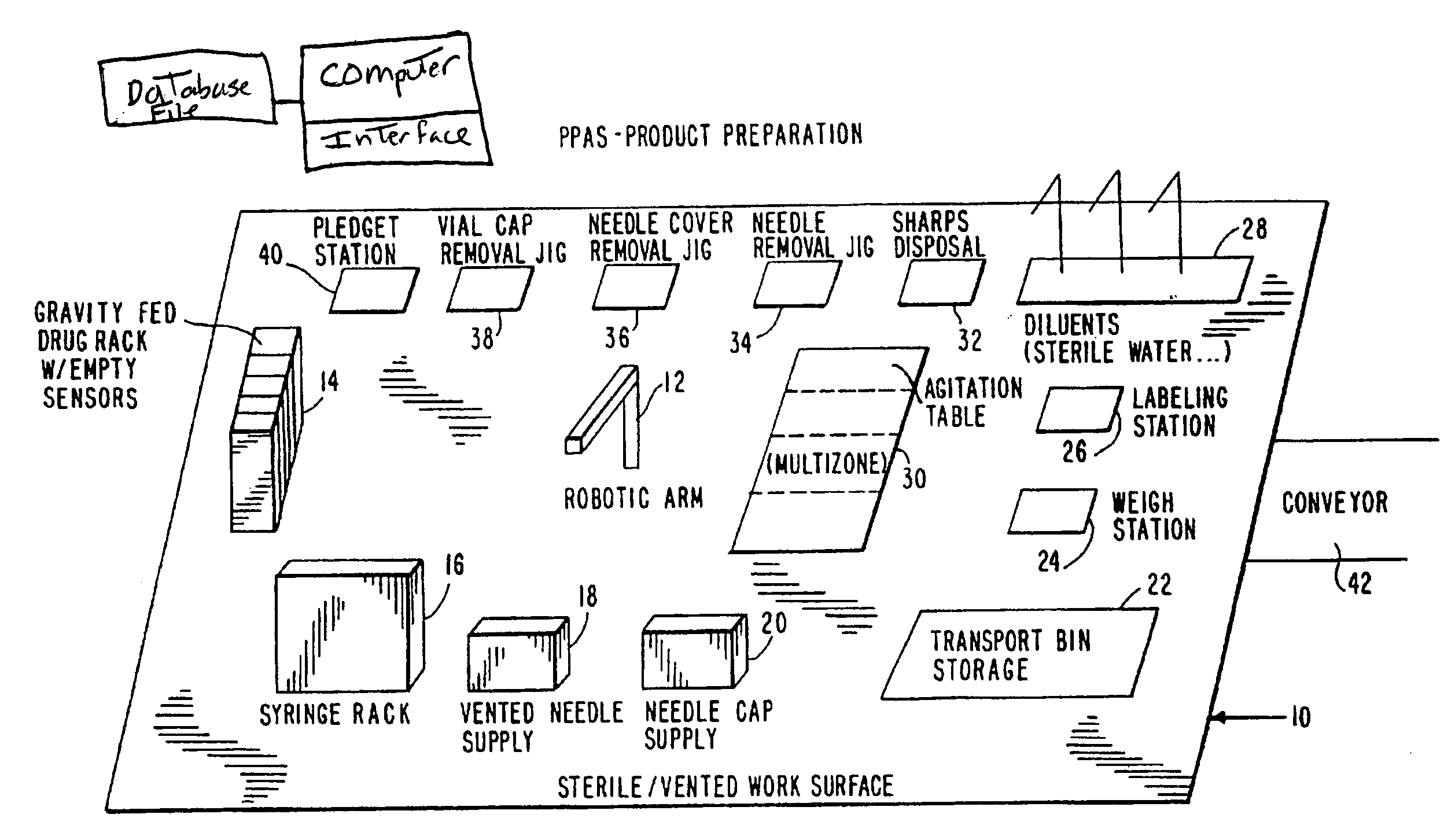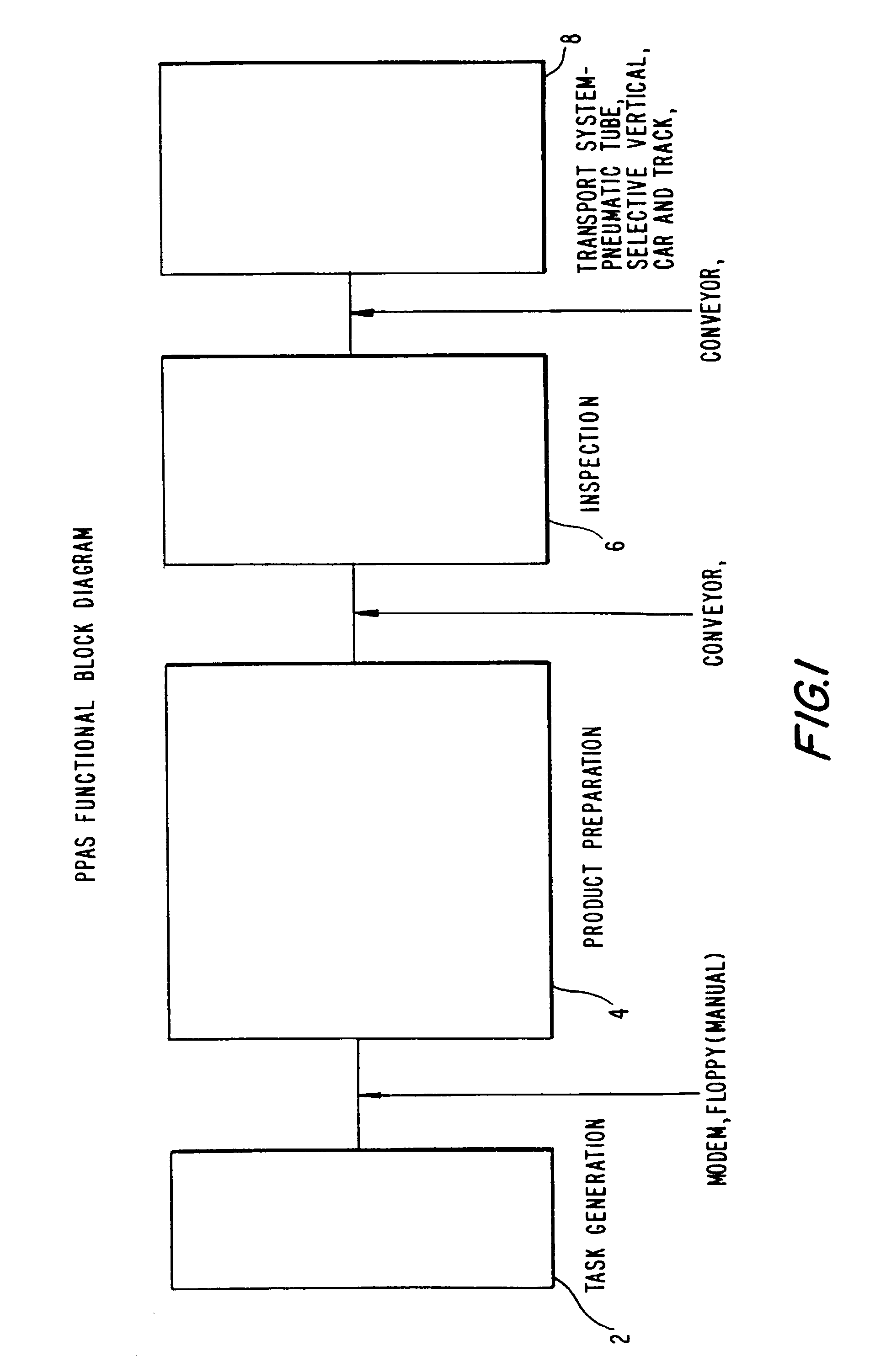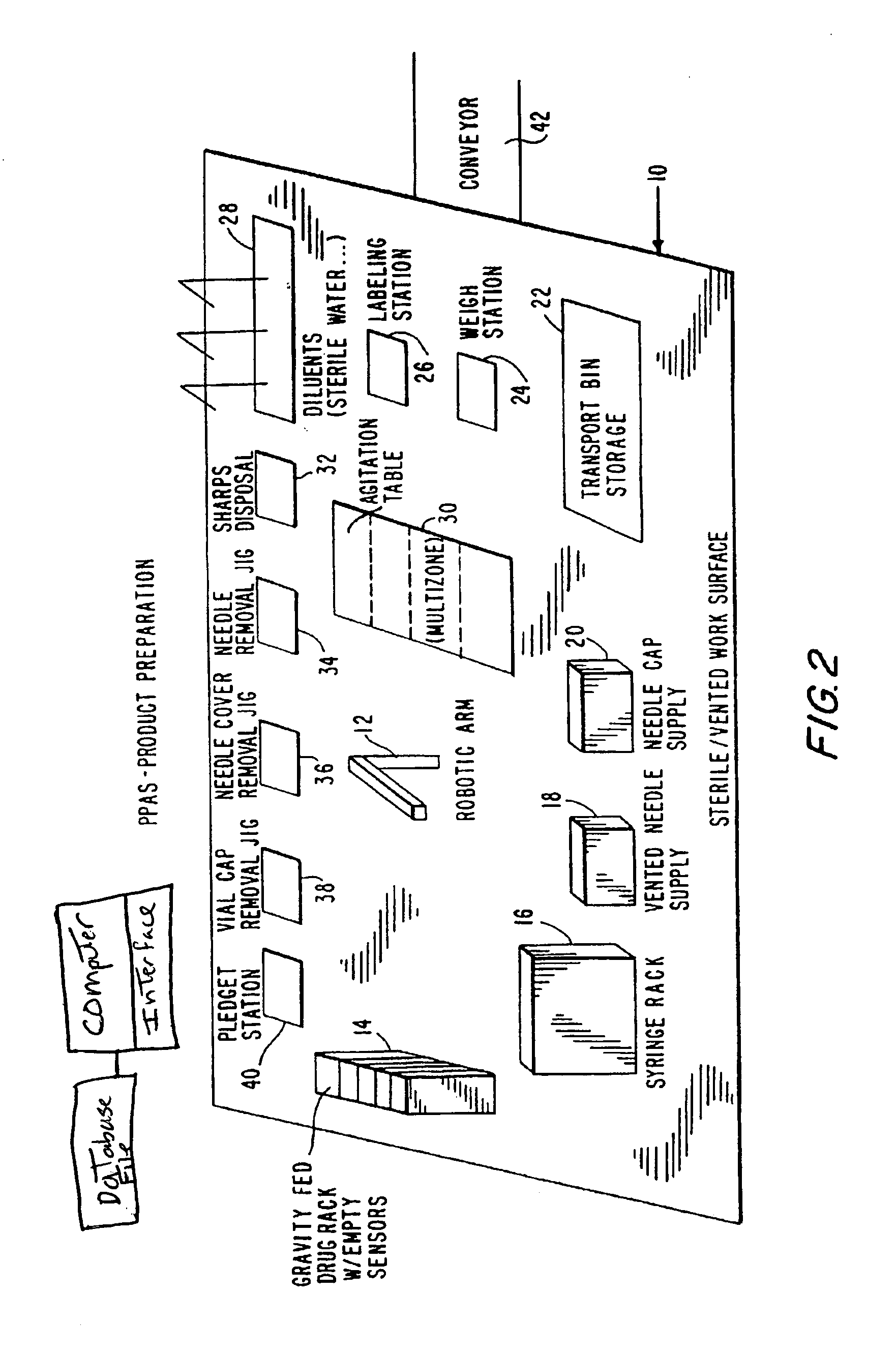Parenteral products automation system (PPAS)
a technology of automation system and parenteral products, applied in the field of automatic systems, can solve the problems of harm to patients, slow and unreliable manual delivery, and exact but tedious responsibility of a highly skilled staff, and achieve the effect of enhancing the pressure barrier and simplifying the correction of problematic carriers
- Summary
- Abstract
- Description
- Claims
- Application Information
AI Technical Summary
Benefits of technology
Problems solved by technology
Method used
Image
Examples
Embodiment Construction
[0077]Referring now to FIG. 1, an overview of the entire present invention is demonstrated in a functional block diagram. It shows input queue step 2 (or task generation step), product preparation step 4, inspection step 6, and transportation step 8.
[0078]Referring now to FIG. 2, the product preparation step is shown, and comprises a base 10 having thereon an industrial robot 12 which performs a series of manipulations resulting in the preparation of a single intravenous product unit based upon the information provided by the Pharmacy Information System. The robot 12 may have articulated arms, and gripping means in the form of jaw members having respective depending tangs at a rotatable wrist element of the arm.
[0079]Robot 12 may be arranged to present the jaw members at a number of stations including: gravity fed drug rack 14, syringe rack 16, needle supply rack 18, pledget station 40, vial cap removal jig 38, needle cover removal jig 36, needle removal jig 34, diluents rack 28, mu...
PUM
| Property | Measurement | Unit |
|---|---|---|
| Weight | aaaaa | aaaaa |
| Time | aaaaa | aaaaa |
| Mechanical properties | aaaaa | aaaaa |
Abstract
Description
Claims
Application Information
 Login to View More
Login to View More - R&D
- Intellectual Property
- Life Sciences
- Materials
- Tech Scout
- Unparalleled Data Quality
- Higher Quality Content
- 60% Fewer Hallucinations
Browse by: Latest US Patents, China's latest patents, Technical Efficacy Thesaurus, Application Domain, Technology Topic, Popular Technical Reports.
© 2025 PatSnap. All rights reserved.Legal|Privacy policy|Modern Slavery Act Transparency Statement|Sitemap|About US| Contact US: help@patsnap.com



